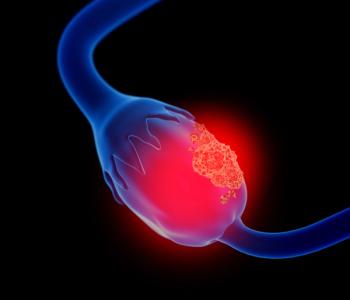
Encouraging Preliminary Results for Dapivirine Vaginal Ring as HIV Prevention
An abstract presented today at this year’s virtual Conference on Retroviruses and Opportunistic Infections lays out promising phase 1 results on a 90-day dapivirine vaginal ring for HIV prevention.
An abstract presented today at this year’s virtual Conference on Retroviruses and Opportunistic Infections lays out promising phase 1 results on a 90-day dapivirine (DPV) vaginal ring (VR) for
At present,
"Regulatory approval of the monthly ring would be an incredible milestone for women, who have been the face of the HIV epidemic in much of the world and need and deserve to have a range of safe and effective methods,” first author Albert Liu, MD, MPH, clinical research director at the San Francisco Department of Public Health, said
The multisite, randomized
Analyses revealed these results on DPV levels:
- Higher plasma and CVF levels at all 3 timepoints for the 100- and 200-mg rings, respectively, vs the 25-mg monthly ring:
- Day 28: plasma: 409 and 411 vs 221 pg/mL; CVF: 24 and 23 vs 13 ng/mg
- Day 56: plasma: 339 and 324 vs 233 pg/mL; CVF: 24 and 21 vs 8 ng/mg
- Day 91: plasma: 276 and 315 vs 220 pg/mL; CVF: 14 and 17 vs 11 ng/mg
- Higher peak concentrations and area under the concentration-time curve (0-28 days) for the 100- and 200-mg rings, respectively, vs the monthly ring:
- Plasma: 11,143 and 11,567 vs 6222 pg/mL
- CVF: 786 and 806 vs 411 ng/mg
- Highest cervical tissue concentration, as gauged by the geometric means ratio, was seen in the 200-mg vs the 100-mg ring at days 28 and 91:
- Day 28: 2.36 (95% CI, 1.13-4.91) vs 0.99 (95% CI, 0.29-3.37)
- Day 91: 3.97 (95% CI, 1.15-13.76) vs 3.04 (0.8-11.54)
- The 200-mg ring had the highest mean amount of DPV released by 13 weeks: 22.8 vs 14.2 and 11.2 mg in the 100- and 25-mg rings, respectively (per the manufacturer)
Proportions of grade ≥ 2 genitourinary or grade ≥ 3 adverse events did not differ between the study arms (P = 1.0).
In addition, on a Likert scale of 1 to 10, high median (interquartile [IQR]) scores were reported for both liking the ring and likelihood of use if proven effective: 8 (IQR, 6-10) and 9 (IQR, 7-10), respectively.
The mean participant age was 30 (range, 19-44) years, 41% were Black, 39% were White, and 8% were Asian. All of the women were assigned female sex at birth. Ninety-four percent remained in the study through day 91, and of them, 82% said they were fully adherent.
“The extended duration DPV VRs were well-tolerated and achieved higher DPV concentrations compared with the monthly DPV VR, likely translating into at least equal efficacy,” the authors concluded. “These findings support further evaluation of 3-month DPV VRs for HIV prevention in women.”
At present, IPM is also investigating a 90-day VR as simultaneous contraception and HIV prevention.
Reference
Liu AY, Islas CD, Gundacker H, et al. Phase 1 PK, safety and acceptability study of 3-month dapivirine rings. Presented at: Conference on Retroviruses and Opportunistic Infections; March 6-10, 2021. Accessed March 8, 2021.
Newsletter
Stay ahead of policy, cost, and value—subscribe to AJMC for expert insights at the intersection of clinical care and health economics.







































